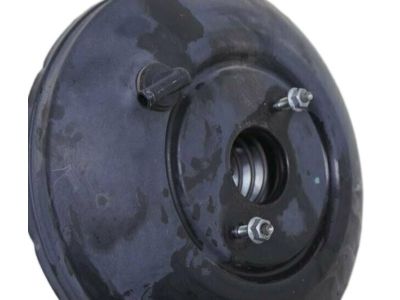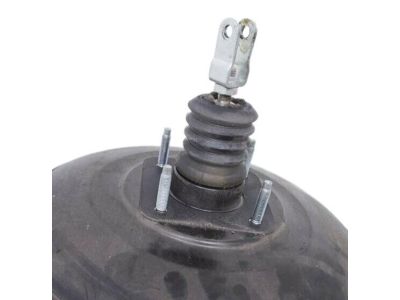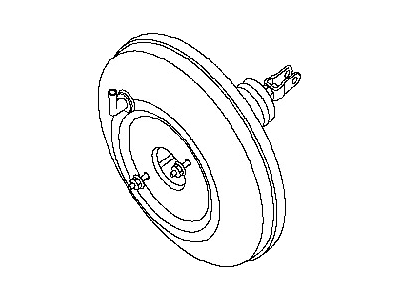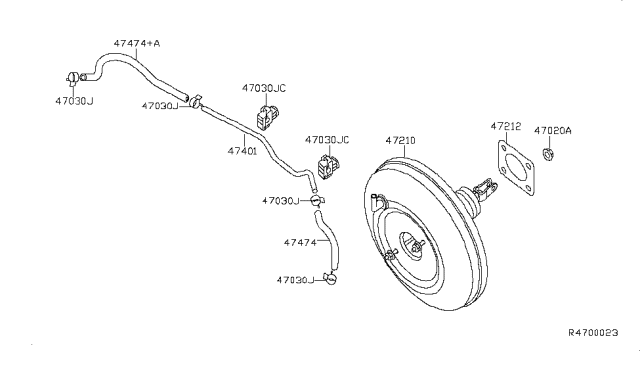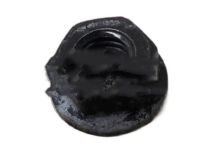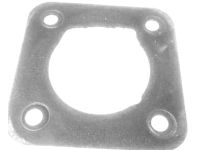To perform an operating check, depress the brake pedal several times with the engine off to ensure there's no change in the pedal reserve distance, then start the engine; if the pedal goes down slightly, operation is normal. For an airtightness check, start the engine and turn it off after one or two minutes, then depress the brake pedal slowly several times; if the pedal depresses less each time, the booster is airtight. While the engine is running, depress the brake pedal, stop the engine with the pedal depressed, and if there's no change in the pedal reserve travel after holding for 30 seconds, the booster is airtight. When replacing the power brake booster, which should not be disassembled due to its complexity and critical role in brake performance, first remove the air filter housing for clearance, then the master cylinder, relieve the fuel pressure and disconnect the fuel line, remove the cowl cover and strut brace, disconnect the vacuum hose from the booster, and for V6 models, remove the accelerator and brake pedals. Next, pull out the safety clip and remove the pin from the clevis to detach it from the brake pedal, then remove the four mounting nuts securing the booster to the firewall and take the booster out of the engine compartment. Before installing the new booster, measure the booster input rod length and adjust if necessary, then install it in reverse order of removal, ensuring a new gasket is used between the booster and the firewall. For adjustment, measure the distance between the power brake booster and the hole in the input rod clevis, compare it to the specified dimension, and if necessary, adjust the clevis before installing the booster, connecting it to the brake pedal, and securely tightening the nut.
Posted by NissanPartsDeal Specialist 
